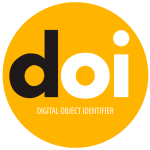Perception of the use of the teacher's virtual whiteboard by students in basic mathematics of a public university, Lima 2022
DOI:
https://doi.org/10.47865/igob.vol7.n27.2024.363Keywords:
Digital education, didactic trends, virtual whiteboard, educational technologiesAbstract
Historically, virtual whiteboards emerged with the rise of digital technologies in the late twentieth and early twenty-first centuries, offering an interactive alternative to traditional physical blackboards. The virtual whiteboard, an emerging tool in distance education, is the object of study of the present research, conducted in a public university, to evaluate its use in the teaching of basic mathematics to 36 students, using a quantitative approach, non-experimental design and descriptive sub-design. In the instrumental dimension, teachers showed limitations in the technical handling of the tool. Cognitively, the integration of the virtual whiteboard in teaching strategies was minimal. Behaviorally, students interacted little with the tool, and axiologically, no significant change was perceived in the educational values promoted. These results suggest the need to train teachers in the effective use of virtual whiteboards and to foster an educational culture that values and takes advantage of digital technologies. They also highlight the importance of further research and development of methodologies that integrate these tools more effectively into the educational process.
Downloads
References
Alanya, J., Alza, M., Diaz, M. y Ochoa, F. (2021). Educación durante la pandemia COVID-19. Uso de la tecnología en la nube: Jamboard. Revista Ibérica de Sistemas e Tecnologias de Informação, 44(8) 39-48. https://www.researchgate.net/publication/355479330
Amaya, D. y Yánez, M. (2021). Las TIC en el aprendizaje de la matemática en bachillerato. Polo Del Conocimiento, 6(2), 583–594. https://doi.org/10.23857/PC.V6I2.2290
Burns, N. y Grove, S. (2004). Investigación en enfermería. ElSevier Saunders. http://www.rlillo.educsalud.cl/Capac_Investigacion_BecadosFOREAPS/Investigacion%20en%20Enfermeria.pdf
Cedeño, F., Chávez, J., & Parrales, A. (2020). Estrategias didácticas para el aprendizaje de la multiplicación en las matemáticas en la educación general básica. Revista Cognosis, 5(20), 123–140. https://doi.org/10.33936/COGNOSIS.V5I0.2782
Creswell, J. (2014). Research Design. Qualitative, quantitative and mixed methods approaches. Thousand Oaks.
Espinel, G., Hernández, C. y Rojas, J. (2021). Las TIC como medio socio-relacional: un análisis descriptivo en el contexto escolar con adolescentes de educación media. Revista de Investigación, Desarrollo e Innovación, 11(1), 99-112. https://doi.org/10.19053/20278306.v11.n1.2020.11686
Etchepare, G., Pérez, C., Casas, J. y Ortega, R. (2017). Enseñanza y Aprendizaje de las Matemáticas. Psychology, Society y Education, 9(1), 1–10. https://dialnet.unirioja.es/servlet/articulo?codigo=6360203
Granda, L., Espinoza, E. y Mayon, S. (2019). Las TIC como herramientas didácticas del proceso de enseñanza-aprendizaje. Revista Conrado, 15(66), 104-110. http://scielo.sld.cu/pdf/rc/v15n66/1990-8644-rc-15-66-104.pdf
Kerlinger, F. y Lee, H. (2002). Investigación del comportamiento. McGraw-Hill. https://padron.entretemas.com.ve/INICC2018-2/lecturas/u2/kerlinger-investigacion.pdf
Lores, B. (2017). Estudio descriptivo del uso de las TIC en Educación Primaria como respuesta a la realidad educativa y social en la provincia de Castellón. [Tesis de doctorado, Universidad CEU]. http://hdl.handle.net/10637/8737
Mejía, J. y Trujillo, J. (2019). Nivel de conocimiento en tecnologías de información y comunicación en docentes de una red educativa Fe y Alegría de Huaylas, Ancash 2019. [Tesis de pregrado, Universidad Católica de Trujillo]
Ministerio de educación (2016). Currículo nacional de la educación básica. MINEDU. https://www.minedu.gob.pe/curriculo/pdf/curriculo-nacional-de-la-educacion-basica.pdf
Moreno, A., Aznar, I., Cáceres, P. y Alonso, S. (2020). E-Learning in the Teaching of Mathematics: An Educational Experience in Adult High School. Mathematics, 8(5), 840. https://doi.org/10.3390/MATH8050840
Pezo, J. (2022). Uso del Jamboard en exposiciones virtuales con Estudiantes de tercero de secundaria en la I.E. Virgen de loreto, Iquitos 2021. [Tesis de pregrado, Universidad Nacional de la Amazonía Peruana]. https://hdl.handle.net/20.500.12737/7946
Sacoto, S. y Zambrano, D. (2023). La pizarra digital como herramienta de aprendizaje en el área de matemáticas. MQRInvestigar, 7(1), 1971–1988. https://doi.org/10.56048/MQR20225.7.1.2023.1971-1988
Sánchez, C. y Zaraff, E. (2019). Competencia digital docente: Estudio descriptivo sobre el uso y aplicación de las TIC en el proceso enseñanza.[Tesis de maestría, Universidad Ucinf]. https://hdl.handle.net/20.500.12743/1744
Sierra, J., Bueno, I. y Monroy, S. (2016). Análisis del uso de las tecnologías TIC por parte de los docentes de las Instituciones educativas de la ciudad de Riohacha. Omnia, 22(2), 50-64. https://www.redalyc.org/pdf/737/73749821005.pdf
Soto, R. (2018). Influencia del uso de la pizarra digital interactiva en la competencia matemática de los estudiantes del cuarto grado de educación primaria de la Institución Educativa Luis E. Pinto Sotomayor de Moquegua, 2017. [Tesis de maestría, Universidad Nacional San Agustín de Arequipa]. http://repositorio.unsa.edu.pe/handle/UNSA/7276
Downloads
Published
How to Cite
Issue
Section
License

This work is licensed under a Creative Commons Attribution-NonCommercial-ShareAlike 4.0 International License.
Esta obra está bajo una licencia internacional Creative Commons Atribución-NoComercial-CompartirIgual 4.0.
















